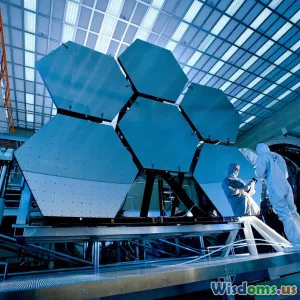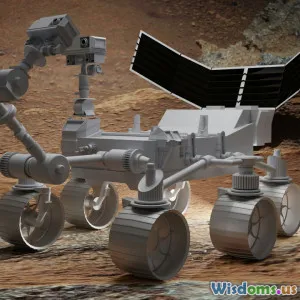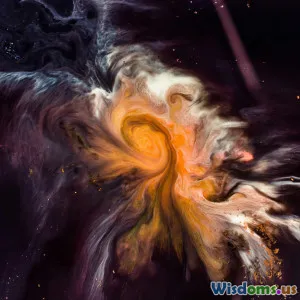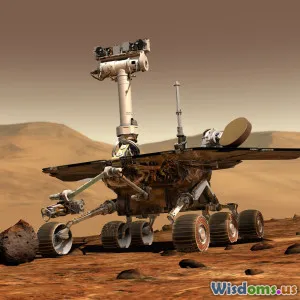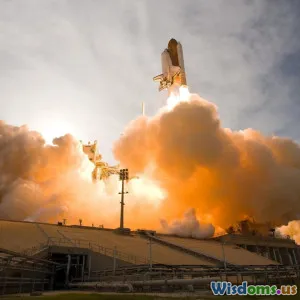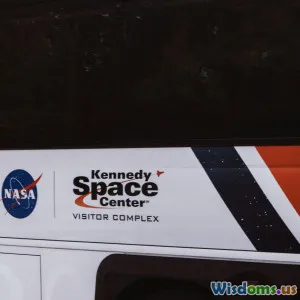
Ten Surprising Facts About Voyager Space Probes’ Journey
9 min read Explore ten astonishing facts about the Voyager probes’ epic journey across our solar system and beyond. (0 Reviews)
Ten Surprising Facts About Voyager Space Probes’ Journey
Introduction
When NASA launched the Voyager 1 and Voyager 2 space probes in 1977, few could have imagined the incredible voyage these robotic explorers would undertake. Initially designed to take advantage of a rare planetary alignment to study the outer planets, the Voyagers became much more — ambassadors to the stars and bearers of humankind's earliest messages for potential extraterrestrial life.
More than four decades later, these pioneering probes continue transmitting data back to Earth from the edge of our solar system and beyond. Their journey is filled with unexpected discoveries, engineering successes, and cosmic phenomena that astonish even seasoned scientists.
In this article, we explore ten surprising facts about the Voyager space probes’ journey that illuminate their monumental impact on science and our understanding of the universe.
1. The Grand Tour: A Rare Planetary Alignment
One of the most critical reasons the Voyager mission was even possible lies in the exceptional planetary alignment. Occurring once every 176 years, this alignment of Jupiter, Saturn, Uranus, and Neptune enabled the probes to use gravitational slingshot maneuvers to travel from one planet to another efficiently.
This gravitational boost substantially reduced the required propellant, making a multi-planet mission feasible with the technology of the 1970s. Voyager 2 took advantage of this trajectory to visit all four gas giants, a feat unmatched by any other spacecraft.
2. The Golden Record — A Message for Extraterrestrials
Each Voyager carries a 12-inch gold-plated copper disc containing sounds and images portraying the diversity of life and culture on Earth. This “Golden Record,” curated by a team led by astronomer Carl Sagan, includes greetings in 55 languages, music from Bach to Chuck Berry, and natural sounds like whale calls.
This unprecedented cultural capsule represents humanity’s hope to be remembered long after our civilization ends and to communicate something profound to any cosmic listeners.
3. Voyager 1 Is the Farthest Human-Made Object
As of 2024, Voyager 1 holds the record for the most distant human-made object in space. It crossed the heliopause—the boundary where the Sun's solar wind gives way to interstellar space—in August 2012, entering the vastness beyond our solar system.
Voyager 1 is over 14 billion miles (about 150 astronomical units) away and still sends data back to Earth. Its continued communication to NASA across unimaginable distances showcases extraordinary engineering durability.
4. Detecting the Solar System’s Outer Limits
Before Voyager’s interstellar journey, scientists only speculated about the structure and extent of the heliosphere. Voyager 1’s crossing of the heliopause provided the first direct measurement of this elusive boundary.
The probe’s instruments detected sudden drops in solar wind particles and increases in cosmic rays from outside the solar system. These measurements clarified the forces shaping the protective bubble around our Sun and have deep implications for understanding cosmic radiation's effect on Earth and space travel.
5. Voyager 2’s Unique Uranus and Neptune Flybys
Voyager 2 remains the only spacecraft to have visited Uranus (1986) and Neptune (1989), providing humanity’s first close-up look at these distant, ice giant planets. Prior to Voyager, we had very little information about their atmospheric composition, magnetic fields, moons, and rings.
For example, Voyager 2 discovered 10 new moons of Neptune and revealed the first active volcanoes beyond Earth on Neptune’s moon Triton. These insights unraveled new questions about planetary formation and dynamics in the outer solar system.
6. An Engineering Marvel Built to Last Decades
The Voyagers were equipped with technology from the early 1970s but vastly outlived their expected operational life. Engineers designed their instruments, computers, and power systems with efficiency and redundancy, such as using long-lasting radioisotope thermoelectric generators (RTGs) powered by plutonium-238.
Remarkably, many instruments remain functional over 45 years later, a testament to the meticulous design strategies and rigorous testing protocols. The probes’ longevity has allowed NASA to continuously update scientific models with real data from otherwise inaccessible space regions.
7. Pioneering Discoveries About Planetary Magnetospheres
Voyager’s multiple planetary flybys offered critical new insights into magnetospheres—magnetic bubbles surrounding planets. For instance, at Jupiter, Voyager detected intense radiation belts and revealed a magnetosphere hundreds of times larger than Earth’s.
These observations transformed our understanding of how magnetic fields protect atmospheres, influence satellite environments, and interact with solar winds, essential for future manned missions and planetary habitability studies.
8. Voyager’s Role in Studying the Solar System’s Moons
While the gas giants were primary targets, Voyager’s exploration vastly expanded knowledge about their many moons. It discovered diverse geologies, atmospheres, and potential subsurface oceans on moons such as Europa and Titan.
Titan's thick atmosphere was a revelation, indicating complex chemistry. Europa’s possibility of an ocean beneath its icy crust sparked ongoing interest for future missions over four decades later, searching for signs of life.
9. A Silent Time Capsule Worth Billions Scientifically
Although launched with a budget of approximately $865 million (about $4.3 billion today), the scientific returns have been priceless. Voyager’s data helped win multiple planetary science accolades, fueled research papers thousands of times over, and set the foundation for the new era of outer solar system missions.
Its instruments uncovered details about atmospheric dynamics, ring structures, and moon surfaces previously hidden in distant darkness. Voyager serves as a classical example of how long-term investment in space science yields multi-generational benefits.
10. Voyager’s Journey Continues Into Interstellar Space
Even as their power supplies dwindle, NASA plans to operate the Voyagers as long as possible. The probes now study the interstellar medium’s properties, a region largely unexplored until now.
Voyager’s ongoing mission informs spacecraft shielding, radiation hazards, and communication challenges critical for future interstellar travel concepts. The Voyagers have truly transcended their original mission parameters by becoming our first messengers into the galaxy’s wider cosmos.
Conclusion
The Voyager probes do more than just cross planets and space—they inspire our deepest curiosity about existence beyond our tiny blue world. Each surprising fact about their journey uncovers layers of scientific wonder, engineering brilliance, and philosophical reflection about our place in the cosmos.
As Voyager 1 and 2 steadily traverse the cosmic ocean, their story exemplifies humanity’s innate drive to explore, understand, and reach out to the unknown. Their enduring legacy reminds us that sometimes the greatest journeys begin with an ambitious vision and that our quest for knowledge can indeed span centuries and light-years.
Let the Voyager missions encourage all of us — scientists, learners, and dreamers — to keep pushing boundaries and gazing beyond the horizon.
Rate the Post
User Reviews
Popular Posts










